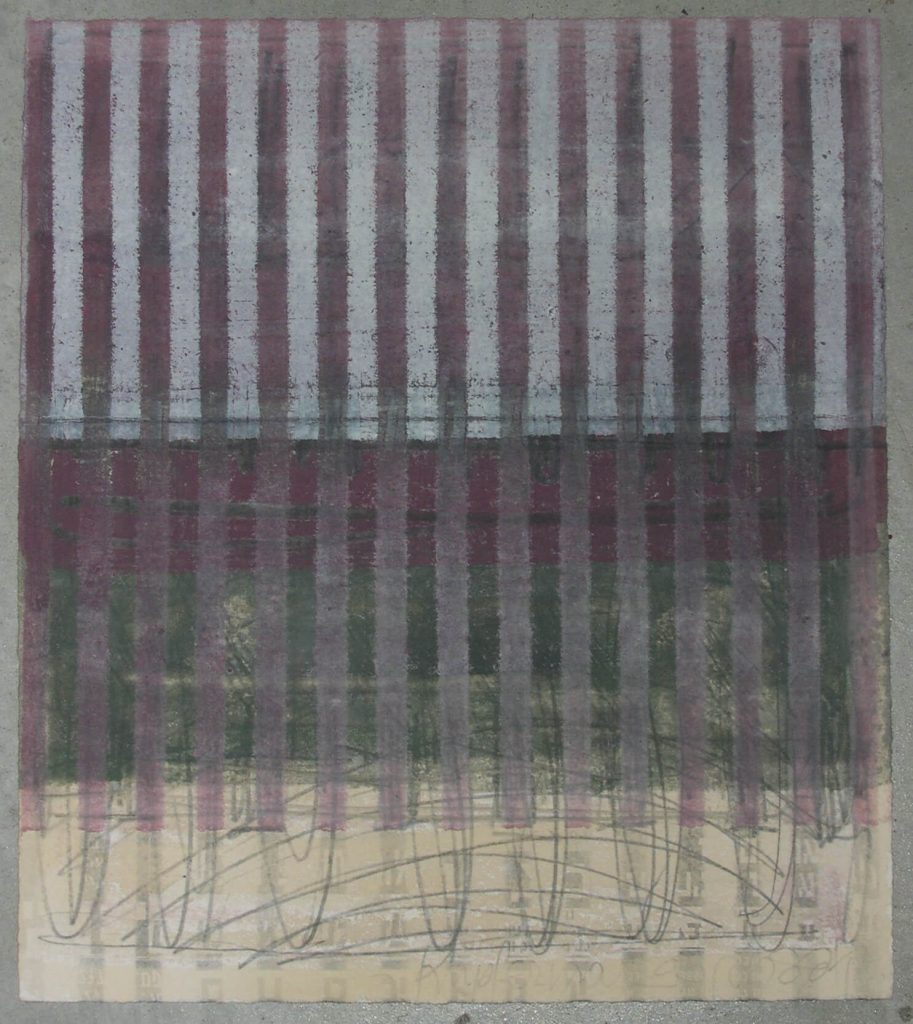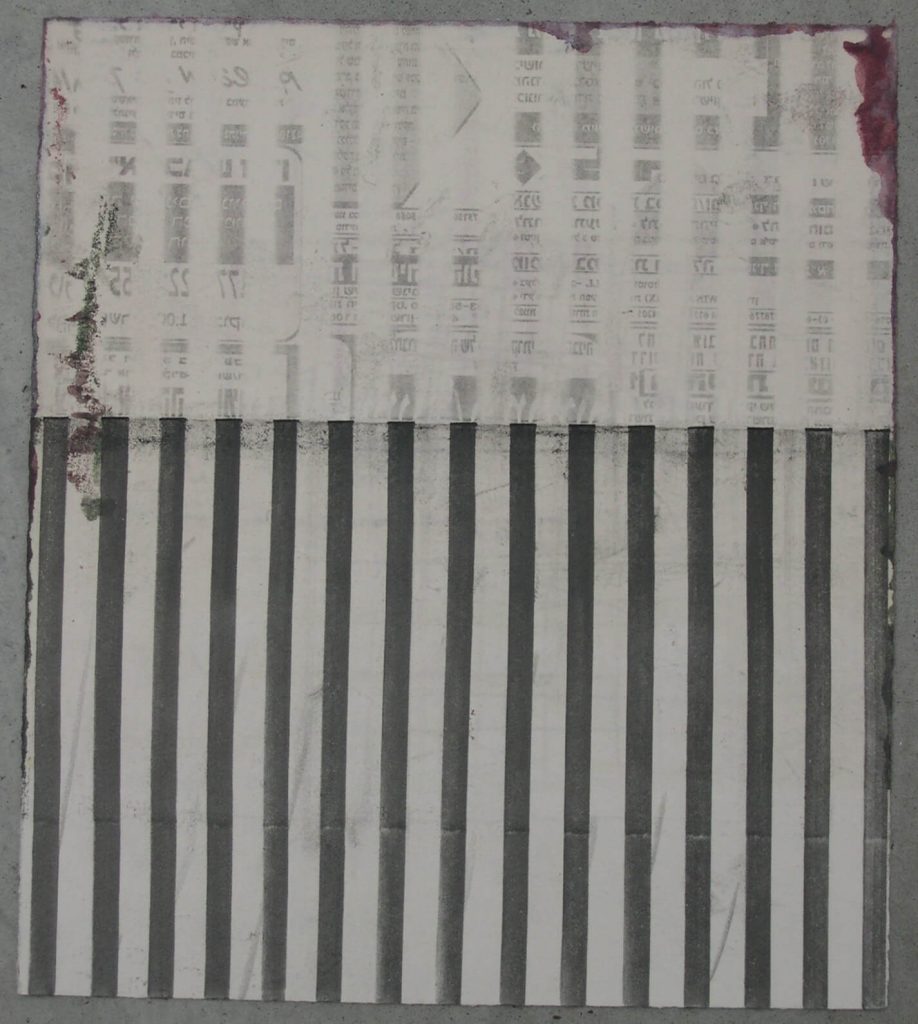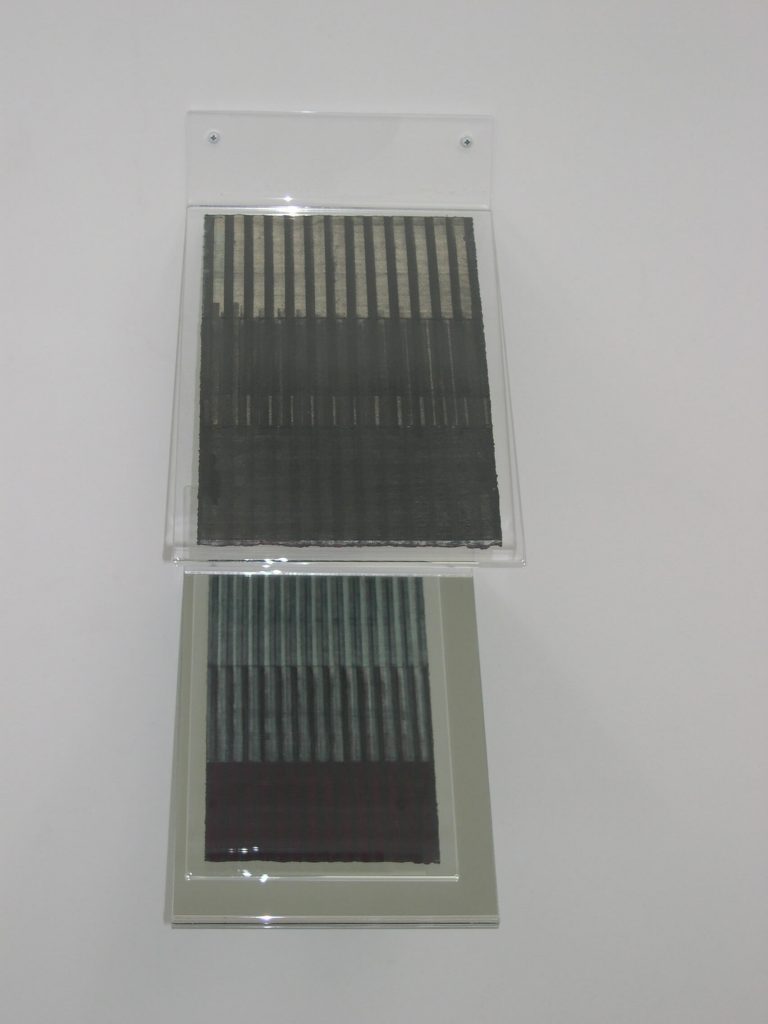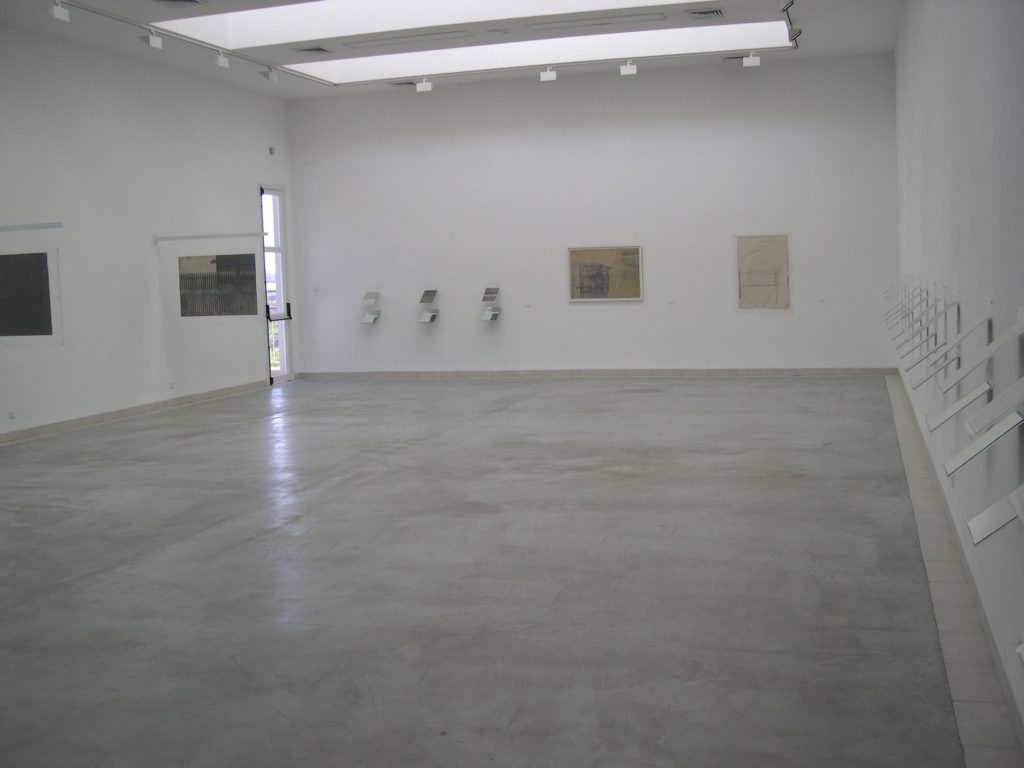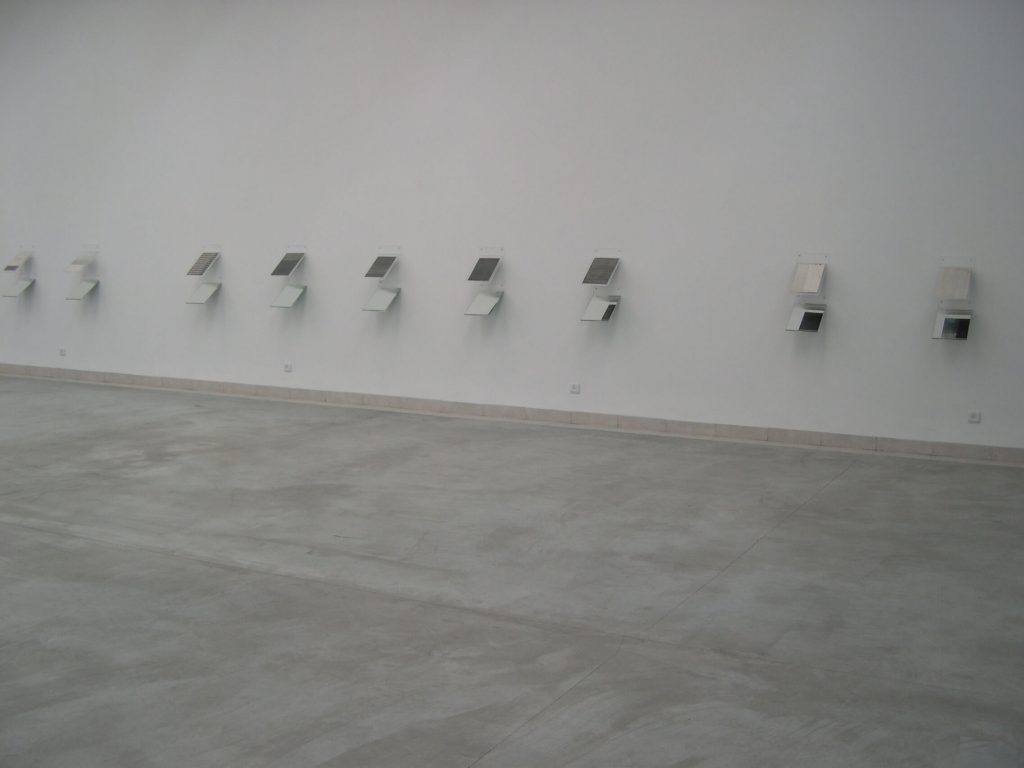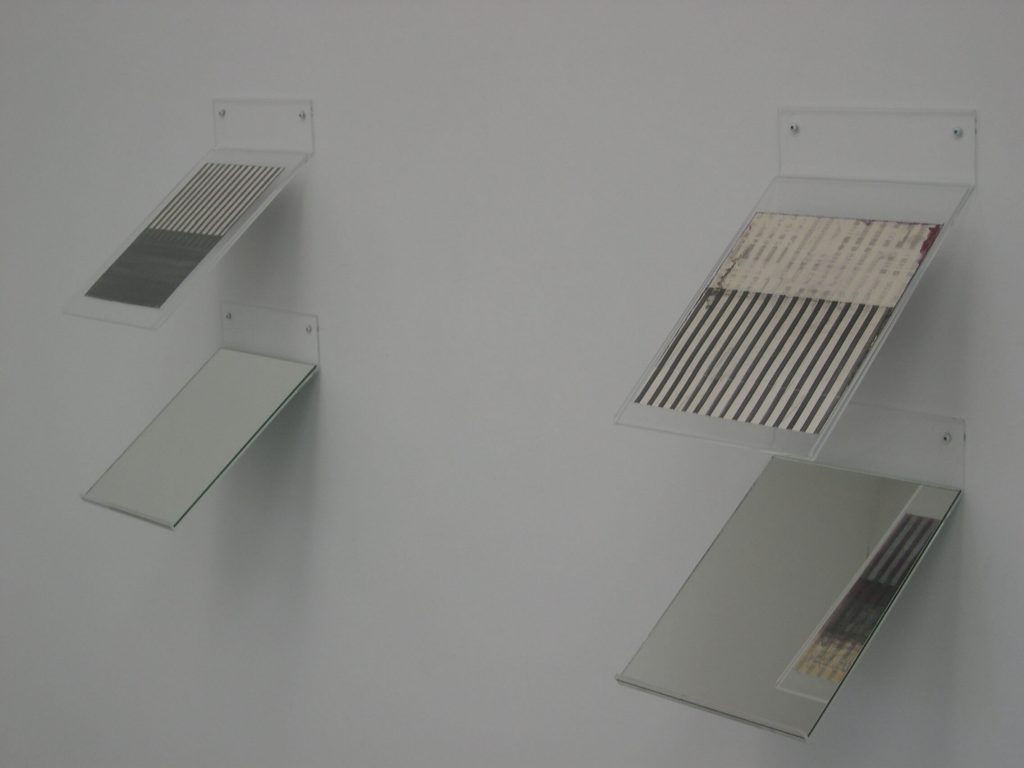Moshe Kupferman: When side B’ was side A’ – December 2005
In the vast majority of the small scale drawings, including the drawings that were created as “groups” and in some of the large drawings denominated by Kupferman “work on paper”, the working process started on the other side, the hidden side of the paper.
He used only diverse pencils and a ruler for this phase in the creation of the first touch, in the stamping of the first impression.
Lets imagine Moshe Kupferman standing near his working table: the paper is placed on its back, high quality drawing paper, usually manufactured by the French company Arches, paper with long fibers that bestow flexibility and its volume allows to scratch sensual lines, its surface is slightly rough and has a creamy shade; an entire sheet of paper, or half sheet, or a quarter, or an eighth, or the sixteenth part of the paper sheet… Kupferman starts to “handle” the paper in front of him, draws lines that join together until they cover, partially of totally, the surface, reveals to us changing energies, a schematic or complex organization, airy or dense, “situations” of concealment and exposure. Always the black and white, and only black and white.
All the different “actions” are designed for him, and he destines them to prepare the surface overleaf, to transform it into a “sensitive” surface, like a field just tilled. Only then will be possible the real, concrete “action” on the other side of the paper that only now will be able to realize its role as Side A’, which faces us. The sowing after the plowing. With all the schematics (relatively) on side B’, with all the marks that not always crystallized into a shape, and certainly not into a saying, he exhibits an indubitable Kupfermanic side, constituting a totality of actions, guarding himself from everything that is not required, constituting the begging of the process, a process that is always the action of organization and its infringement, that always contains a start and a stopping point. And Kupferman’s stopping point, both in side A’ and in side B’, is his decision to refrain from continuing.
We know, or at least we sense, that in Kupferman’s creation there is a dialogue between the work on paper and the painting on the canvas, or on wood. This dialogue takes place also between the two sides of the page, when side A’ serves as an echo, as a tangible direct consequence (as concealed as it is) of the “actions”, the markings, the touches invested in the first part of the process. Probably, side B’ would not have been born without side A’.
Yona Fischer
December 2005
